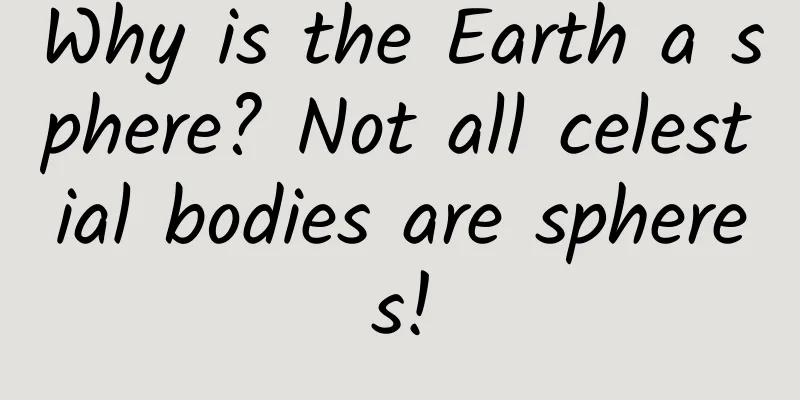"Room temperature superconductivity" is all over the news again! What is it? How will it revolutionize the world? Read it in one article

|
At the end of last month, a South Korean research team announced the discovery of a room-temperature and pressure superconductor called LK-99 (a compound of chalcopyrite and cuprous phosphide). As soon as the news came out, it attracted the attention of people around the world. After all, room-temperature superconductivity is believed to lead the next industrial revolution and completely overturn people's daily lives . The day before yesterday, the Lawrence Berkeley National Laboratory (LBNL) in the United States submitted a paper on arXiv, saying that its experimental results support LK-99 as a room-temperature ambient pressure superconductor. Also yesterday, the USTC team updated the firing results of the LK-99 material on the Internet, and a very small piece of it showed anti-magnetism; the doctors from Huazhong University of Science and Technology claimed that "for the first time, they have verified the synthesis of LK-99 crystals that can be magnetically suspended." Although it is not true suspension, its angle is larger than the magnetic levitation angle of the sample in the video of the Korean research team. In addition, Professor Sun Yue of Southeast University also announced the entire process of the room-temperature superconductivity experiment on Bilibili, but said that no signals that might indicate superconductivity were observed, and that the samples and magnets produced did not produce any suspension phenomenon. Likewise, the Beihang team also claimed that they had not found superconductivity in LK-99, especially since they compared the X-ray diffraction pattern of the South Korean team with their own results and confirmed that they had produced the same thing. For a time, LK-99 verification set off a "reappearance trend". Scholars at home and abroad have been discussing this, and the comment sections of major social media are even more lively. However, while eating melons, do you really understand what superconductivity is? What is room temperature superconductivity? How will it change the world? Superconductivity: The Holy Grail of Physics To understand the significance of room-temperature superconductivity, we need to first understand what superconductivity is? According to Wikipedia, superconductivity refers to the phenomenon that the resistance of a material becomes zero when the temperature is below a certain level, and this temperature is called the superconducting transition temperature (Tc). When electrons flow through a typical conducting material, they encounter obstacles in the form of atoms, which creates resistance, leading to heat dissipation and energy loss. However, the phenomenon of superconductivity is fascinating. At extremely low temperatures close to absolute zero, electrons can pair up and move effortlessly through the material, ignoring resistance and conducting electricity without loss. This resistance-free property allows for near-perfect energy transfer. The characteristics of superconductivity are zero resistance and complete diamagnetism, the latter of which is also known as the Meissner effect. However, the current successful reproduction of LK-99 has only verified complete diamagnetism, and the zero resistance aspect has yet to be verified. Traditionally, superconductors require ultra-low temperatures to display their extraordinary properties, so their practical applications have been limited to special industries. The discovery of "high-temperature" superconductors in the late 1980s brought new hope because they can operate at temperatures that can be reached using relatively cheap liquid nitrogen. Despite this, these high-temperature superconductors are still brittle and difficult to process in practical applications, hindering their widespread use. Therefore, more and more scientific research teams have begun to study the possibility of room-temperature superconductors, and a number of related studies have been published in recent years, but they ultimately ended up being falsified and retracted. Room temperature superconductors , also known as normal temperature superconductors, refer to materials that can produce superconductivity at temperatures above zero degrees Celsius. Compared with other superconductors, the conditions for room temperature superconductors are easier to achieve in daily life. Once room-temperature superconductivity is achieved, it will completely change the electricity and electronics industries, allowing power transmission without any resistance, thus bringing unprecedented efficiency and technological progress. As of 2020, the highest-temperature superconductor is an ultra-high-pressure carbon-hydrogen sulfide system with a pressure of 267 GPa and a critical temperature of +15 degrees Celsius. What would the world be like if room temperature superconductivity were achieved? With the continuous development and exploration of room-temperature superconducting technology, people are full of expectations on whether it can trigger the fourth industrial revolution. The new room-temperature superconductor LK-99 discovered this time, once reproduced, may bring the dream into reality. So, the question is, what will our world look like if room temperature superconductivity is achieved? Here are some examples for reference: 1. More efficient batteries The use of room-temperature superconductors in batteries could significantly increase the energy storage capacity and shorten charging times of a variety of devices, including smartphones, laptops and electric vehicles. This would result in longer-lasting and more reliable power sources, thus enhancing everyday experiences. 2. Quantum computers Room-temperature superconductors could lead to a major breakthrough in quantum computing. Superconducting materials are essential for creating and maintaining the delicate quantum states needed to process complex calculations. If LK-99 is proven to be a viable room-temperature superconductor, it could pave the way for more accessible and practical quantum computers, bringing faster and more powerful data processing capabilities to a variety of industries. 3. Storage of renewable energy Renewable energy sources, such as solar and wind power, usually generate electricity intermittently. However, with the potential of room-temperature superconductors, it can effectively store excess energy during peak periods. This stored energy can be released when power generation is low, ensuring a continuous and stable supply of renewable energy, making it more feasible to rely on clean energy to meet daily electricity needs. 4. The power and range of land, sea and air vehicles will leap forward The use of room-temperature superconductors in electric motors and propulsion systems could bring major advances to transportation. Electric vehicles, aircraft, ships and trains could benefit from improved energy efficiency and performance. With LK-99, electric vehicles could have longer driving ranges and faster charging capabilities, making them more suitable for daily commutes and reducing carbon emissions. 5. Ultra-high-speed magnetic train By reducing energy losses during propulsion, room-temperature superconductors could enable maglev trains to achieve higher speeds and improve the daily commuting experience for passengers in urban areas. 6. Improve energy distribution efficiency The use of room-temperature superconductors in power transmission systems could significantly reduce energy losses during long-distance power distribution. This efficiency improvement would reduce power costs and enable a more reliable grid. It should be noted that the above application areas are only speculations and have not yet been recognized by the scientific community. As of now, the concept and realization of room-temperature superconductors similar to LK-99 have not been confirmed, and its true potential and practicality are still shrouded in mystery. However, amid the excitement, there are also doubts. Several past claims in the superconductivity field about room temperature superconductors have failed to withstand rigorous scrutiny. As a result, the scientific community remains cautious and urges further verification of the Korean team's findings. Peer-reviewed research and independent replication of the results are essential to determine the validity of their findings. It is worth noting that just today, South Korea’s SBS News reported that the first author of the South Korean research team’s room-temperature superconductivity paper has requested the withdrawal of the paper, claiming that the paper has defects. After being improved, it has been submitted to a regular journal and samples have been provided to the academic community for inspection. Once upon a time, artificial intelligence (AI) existed only in science fiction, but now it has become an integral part of our daily lives. Today, the prospect of room-temperature, atmospheric-pressure superconductors has captured the imagination of scientists and the public. If achieved, it will break through countless boundaries of human imagination and lead us into a new era of technological advancement. Appendix: Overview of the history of superconductivity In 1908, Dutch physicist Kamerlingh Onnes successfully liquefied helium. In 1911, when Onnes used liquid helium to lower the temperature of mercury to 4.15K, he found that the resistance of mercury dropped to zero. He called this phenomenon "superconductivity." He also won the Nobel Prize in Physics for this. Since then, mercury has become the first superconductor discovered by scientists, and its superconducting Tc is 4.2 K. The so-called superconducting Tc is the superconducting transition temperature, that is, the temperature at which a superconductor enters a superconducting state from a normal state. In 1957, three American scientists, John Bardeen, Leon Neil Cooper and John Robert Schrieffer, proposed the BCS theory named after their initials, which explains the microscopic mechanism of superconductivity. Based on this theory, scientist McMillan proposed that there may be an upper limit to the superconducting transition temperature, which is generally believed to be no more than 40 K. This is the famous McMillan limit in history. In 1986, German scientist Johannes Bednorz and Swiss scientist Karl Müller discovered that ceramic metal oxides can be used as superconductors, opening the era of copper-based high-temperature superconductors, and won the 1987 Nobel Prize in Physics. In 1987, Chinese-American scientist Zhu Jingwu, Taiwanese physicist Wu Maokun and mainland scientist Zhao Zhongxian successively raised the critical superconducting temperature to above 90K in yttrium-barium-copper-oxygen materials, and the "temperature barrier" of liquid nitrogen (77K) was also broken. In 2008, Hideo Hosono of Tokyo Institute of Technology and his collaborators discovered a new type of iron-based superconductor. Subsequently, the superconducting critical temperature of iron-based superconductors was quickly raised to 55K. In 2012, Xue Qikun of Tsinghua University and his collaborators discovered that a single atomic layer of FeSe grown on a SrTiO3 substrate has a superconducting critical temperature higher than 77K, which is also the highest superconducting critical temperature record for iron-based superconductors. In 2015, physicists discovered that hydrogen sulfide will undergo a superconducting phase transition at a temperature of about 203K (-70 °C) under extremely high pressure (at least 150GPa, or about 1.5 million standard atmospheres), making it the highest temperature superconductor known to date. In 2018, Chinese physics student Cao Yuan published two papers in the journal Nature as the first author, discovering that two layers of graphene achieved superconductivity at a temperature of 1.7K when stacked at a deflection angle of 1.1 degrees. Today, the story of superconductivity continues... Author: Yan Yimi Editor: Academic Jun |
<<: Will there be more extreme rainstorms in the future? Here is the explanation
Recommend
5 ways to create copy when you have no inspiration
Being a copywriter is like being a baker in a cak...
Apple iOS 9 official version released (including download address)
In the early morning of September 17, Apple annou...
iQiyi product operation analysis!
As a video operator platform, iQiyi has developed...
How to write a good bug report
If you are just starting to work on bug tracking,...
Lagou Java Engineer High-Paying Training Camp 5th
Lagou Java Engineer High-Paying Training Camp 5 R...
The cold wave is really coming! Temperatures in these places may drop by more than 20℃ this week, please take precautions
This weekend just ended, did you feel that summer...
The secret of Tencent Video’s advertising materials to achieve high volume
The author recently met a friend in the same indu...
In such a hot day, the animals were roasted and deformed?!
Tianlan 2023 focuses on air quality and climate c...
How to send lucky bags on Douyin? What is a Super Lucky Bag?
Today I will introduce to you the content about D...
At least 10 million Android users have switched to iOS in the past two years
Although Apple's iPhone is the most profitabl...
Why does the dragon raise its head on February 2?
This article was reviewed by Shao Lin, a popular ...
How will Baidu, Toutiao and Weibo fight in the information flow advertising battlefield?
1. The Warring States Period of Information Flow ...
How many of these 10 tips for promoting mini programs do you know?
If you care about mini programs , then you should...
The Ministry of Industry and Information Technology responded to netizens: Caller ID fees will be gradually eliminated within 3-5 years
Recently, a netizen of People's Daily Online ...
When will electric cars be cheaper than fuel cars? Technological progress and economies of scale will be key factors in reducing costs
my country has 2 million new energy vehicles, but...









